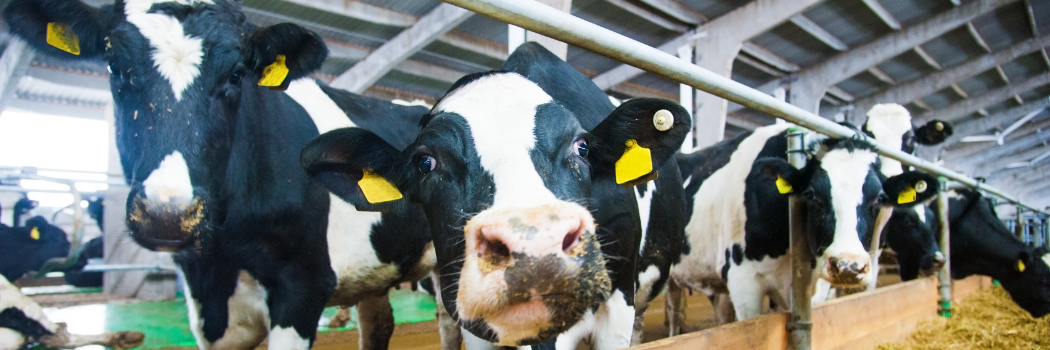Tackling the ‘Moothane’ problem - cutting greenhouse gas from livestock

Did you know that methane released by animals such as cows accounts for about 50 per cent of agricultural greenhouse gas emissions, and that one third of this is released indoors, in barns and sheds?
This so-called ‘moothane’, released when livestock belch and pass wind, is about 30 times as effective as carbon dioxide in trapping heat over a 100 year timescale, and represents a major barrier for the farming sector to meet net zero targets.
‘Moothane’ and barn air
Our Chemistry and Engineering Departments are part of a new collaboration looking at how greenhouse gases released by livestock can be safely and cost effectively removed from barns to help the agricultural industry reach national level net-zero emissions targets.
The project will explore whether existing catalytic equipment, used to remove methane from the air in spaces such as coal mines, can be used to safely decompose methane in barn air, preventing it from being released into the wider atmosphere.
Combining expertise
The project is a collaboration between Durham University, sustainable technology company Johnson Matthey, University of Nottingham and NFU Energy.
Our Chemistry and Engineering experts, led by Dr Simon Beaumont and Dr Andrew Smallbone, will be testing the catalysts, to understand how the existing technology can be adapted to work in cattle barns where the methane in the air is very diluted. They will also investigate what impact other variables, such as barn design, time of year and other components in barn air, may have.
The hope is that by combining expertise from industry and academia, this project will help accelerate progress towards a potential solution that can be easily deployed by farmers to help reduce the climate impacts of livestock farming.
Find out more
- Read about the work of Dr Simon Beaumont and Dr Andrew Smallbone.
- Interested in studying Chemistry with us? Find out about our undergraduate and postgraduate study oportunities.
- Find out about studying undergraduate and postgraduate Engineering with us.
- Learn more about our Durham Energy Institute.
- This project has been received funding from the UKRI’s Farming Innovation Pathways


/prod01/prodbucket01/media/durham-university/research-/research-institutes/durham-energy-institute/landscapes-cityscapes-montages-etc/Walney-sunset-2000X800.jpg)